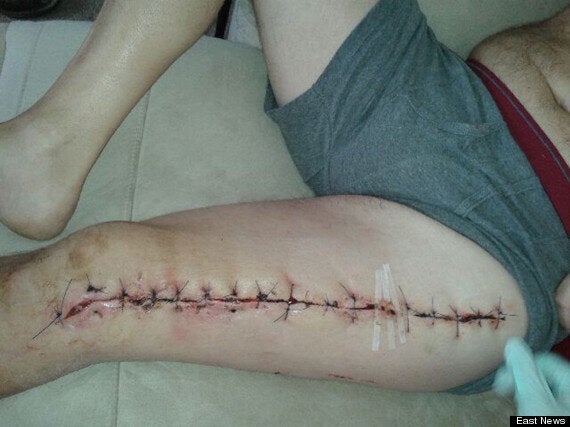SEE ALSO:
An Essex decorator nearly lost his leg after being bitten by a false widow spider.
Ricki Whitmore encountered a nest of the venomous arachnids while working at a school.
He told The Daily Star: "They were quite big, a purplish brown colour with strange markings on their backs.

Ricki Whitmore nearly lost his leg after being bitten by a false widow spider
"I'd never seen anything like it. It was quite creepy. I'd never kill a spider but I needed access to the corner so I just swept them away."
The spiders are related to the black widow, but do not have the distinctive red spot on their backs. They make similar "tangle" webs, which are full of eggs, making it likely for many spiders to be in the same small area.
Whitmore was bitten on the leg but didn't go to seek medical help until a day later.

The father-of-three is recovering in a relative's home to avoid distressing his children
Shortly after being prescribed antibiotics, the 39-year-old was rushed to hospital where surgeons found so much poison in his system he faced amputation of his leg.
Thankfully the limb has been saved - though Whitmore is unable to work and is staying with family members to avoid distressing his children.
Each day he is visited by a nurse who cleans and dresses his wounds and six months of physiotherapy are on the cards before he is expected to walk again.

The false widow spider is known to live in Britain, unlike the black widow
Whitmore's father David told the Romford Recorder: "I was totally shocked to be honest. It's not something you expect to happen in this country.
"It's horrendous and makes me feel quite sick. We're just glad he's OK and it could have been worse."
Unlike the black widow, the false widow spider is known to live in Britain and tend to populate the coastal areas of southern England and London.
According to Stuart Hine of the Natural History Museum's Insect Information Service, no one has ever died of a spider bite in Britain and the number of reported bites from spiders in general is minimal.